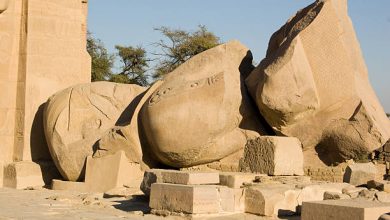How to Fight Monsters by Sherman Alexi is a chapter from the book “The Absolutely True Diary of a Part-Time Indian” that captures the struggles of being an outsider among white Native Americans. The chapter explores the themes of alienation, fear, marginalization, and reclaiming identity and a sense of agency.
How to Fight Monsters | Summary
“How to Fight Monsters”, by Sherman Alexi, opens with Junior and his dad having a conversation. The father tells Junior that he can always go back to Rez School if he is scared of going to Reardan. He tells him to remember that white people aren’t better than him. Although, Junior and his dad both knew that this wasn’t true. Junior feels that the best thing he said was :
“You’re a warrior”.
Junior stands alone at the front door of the school for a few minutes and watches the white kids who begin arriving at school. He describes them as translucent, giant white guys who looked like men and not boys. The white boys stare at Junior, who has a swollen nose and black eyes.
He feels worthless and stupid and thinks of living in the woods like a hermit. He walks into the front office and is recognized as a reservation student. Melinda, the secretary hands him the schedule, a copy of the school constitution, moral code, and a temporary student ID. She assigns him to Mr. Grant for homeroom. Junior hustles down the hallway to the homeroom, since he is late.
As Junior walks into the classroom, everyone stares at him. He walks down the aisle to sit in the back row and then Penelope leans towards him to ask his name. When he mentions his name is Junior, everyone in class starts laughing at his name because he is the only one named Junior in Reardan. Soon, the teacher yells his name “Arnold Spirit”. Penelope, again leaning towards Junior is mad, because he didn’t tell her his real name. He explains to her that his name is both Arnold and Junior.
Junior is freaked and does not talk for six days and on the seventh day, he gets into a fist-fight. He remembers how he lost most of the fist-fights and was a terrible fighter- an example of a human punching bag. He is ignored by everyone in the school- the white girls, Indian girls, and white boys. However, there are a few Reardan boys who pay special attention to Junior. They call him names like “chief”, “Tonto”, and “Squaw boy”. During lunchtime, he is standing by a sculpture, studying the sky without his telescope. Roger and his gang stutter over towards Junior and call him Hey Chief. Roger cracks a joke involving Indians, African Americans, and a buffalo which is racist and disgusting according to Junior. To defend himself, the Indians, and the black people, Junior punches Roger in the face. Roger, terribly hurt, lands on the ground with a bleeding nose.
Roger feels insulted and acts like he has been wronged. Junior feels brave because he is no longer a human target. Roger walks away, followed by his gang, staring at Junior. Junior is confused, as a result of following the ‘official and unwritten rules of fisticuffs. However, he realizes that the white boys ignored these rules or perhaps had a different set of rules that required them not to get into fistfights.
Thus, Junior went on from being a small target in Wellpinit to a larger target in Reardan. He feels like being shoved into a rocket ship and blasted onto a new planet. Roger and his friends disappear and Junior stands mute like a stop sign.
How to Fight Monsters | Analysis
The protagonist of the text, Junior is scared of going to Reardan because he would be mutilated and pummelled if he decides to move back to his previous school in Wellpinit. He is uncertain and apprehensive about the new place and an unfamiliar environment. His fear of a new school reflects the vulnerability and anxiety of moving into an unfamiliar social landscape.
He has internalized racism because of his cultural identity as an Indian and is conscious of his surroundings at Reardan and describes the white kids who were “translucent” and “blue veins” could be seen like rivers through their skin. He describes them as huge, monster dudes who look like men. Junior’s description of the white kids symbolizes the inferiority complex that he feels around his white peers in school.
The cartoon of White vs Indian describes his perception of the white peers as having a bright future, with positive role models, branded clothes and accessories, and hope of having a comfortable and luxurious lifestyle because of their skin color. On the other hand, the Indian boy has a vanishing past, with a medical family history of diabetes and cancer. This Indian boy has a bone-crushing reality because of his identity as a reservation Indian, which does not allow him to rise on the social ladder.
Junior’s experiences in the classroom, underscores the sense of alienation and loneliness. This leads to an escalation of feelings of not belonging and being an outsider. A significant turning point occurs in the narrative when he opposes and fights back against his white peers, who use derogatory slurs. Junior punches Roger in the face. Roger is insulted and pretends as if he has been wronged by Junior. This act of self-empowerment and resistance is a pivotal moment for Junior, as he defends himself and stands up against the prejudice and mistreatment that he has endured.
However, after the fistfight, Junior’s expectation of how his opponents would react is not met, which leaves him confused regarding whether they follow the unwritten rules of fistfights. As a result, he is again rendered as an outsider who does not belong, reinforcing his internal conflict. He thinks that perhaps there are different sets of rules that the Reardan kids follow, which makes him feel like he does not belong and remains a marginalized individual. Thus, the text portrays his journey, as he confronts fears, and the psychological impact of racism while exploring themes like alienation, fear, marginalization, and reclaiming identity and a sense of agency.
How to Fight Monsters | Title
The title “How to Fight Monsters” captures the protagonist, Junior’s perception of his schoolmates and introduces the central conflict in the narrative. Here, Junior refers to the white Americans who bully him as “monsters”. His description of the bully kids symbolizes the power dynamics and psychological consequences of racism on immigrants and natives who do not fit in the stereotypical mold of an ideal American citizen. It highlights the fear, marginalization, and dehumanization that he experiences in school. The title also alludes to the set of “Official and Unwritten Spokane Indian rules of fisticuffs” that the protagonist follows, which helps him defend himself from the physical fights and preserve his cultural identity, or he would be beaten twice as hard. Thus, the title signifies the journey in a hostile world and his fight against monsters is not only physical but also an internal one to retain his identity and have an agency.
How to Fight Monsters | Character Sketch
The protagonist of the text: Junior is a multidimensional character who represents the struggles of immigrants and black Americans in a racially unjust society. He is a victim of bullying and racism due to his identity as a ‘reservation Indian’, and is often subjected to derogatory slurs like “Chief” Tonto, or Squaw boy”, by his white peers. Thus, it leads to feelings of isolation, powerlessness, and vulnerability. Consequently, he develops his personality as a weak, lonely, shy, worthless, and stupid kid. Junior describes himself as a human punching bag and a terrible fighter who would lose most of the fistfights that he got himself into, which reinforces his perception as someone who can be easily defeated. Ultimately, he emerges as a round and dynamic character who challenges the limitations imposed on him due to his identity. He shifts from being a small target in Wellpinit to a large target in Reardan. He confronts his bully Roger and stands against the oppressive bullies who subject him to unjust treatment in school. As the narrative progresses, he has a deeper understanding of himself and asserts his agency.
How to Fight Monsters | Themes
In “How to Fight Monsters” by Sherman Alexie, one of the principal themes is the journey of finding individuality and identity within society. The central character, Junior embarks on a quest to discover his self-worth in an oppressive and racist society. He develops resilience and a stronger sense of self, emerging as a courageous and empowered individual. Through the experience of Junior, Alexie sheds light on the journey of immigrants, who while trying to find their place in society, fall prey to bullying and racism by white Americans. In both schools, the protagonist is subjected to derogatory treatment and slurs and recognized as a reservation Indian. He is a small target in his previous school, where he would lose in fistfights and hurt himself. Following a similar experience in Reardan, the protagonist feels worthless, lonely, and weak in Reardan. But the story takes a turn, as Junior establishes his identity and reclaims agency by fighting back the bullies, who dehumanize him. This pivotal scene signifies the theme of finding an identity in society because Junior refuses to allow others to define him solely on his marginal status.
How to Fight Monsters | Literary devices
In ‘How to Fight Monsters’, several literary devices are employed by Sherman Alexie to enhance the storytelling. Some of the prominent literary devices in the text are foreshadowing and Irony.
Foreshadowing is used to create suspense in the minds of the readers and hint at future events that would follow in the narrative, creating suspense and anticipation. For Instance, the line- “And on the seventh day, I got into the weirdest fistfight of my life” serves as a foreshadowing device that mentions the probability of a fistfight and the course of events that are supposed to occur in Reardan. It adds a layer of expectation, as the readers expect the consequences of the fistfight.
The author uses Irony to highlight the contrast between the expectations of the consequences of Junior’s fistfight with Roger and the reaction that Junior receives from his peers is ironic. He expects them to hit back and engage in a physical fight. However, he realizes perhaps they follow a different set of rules. Thus, his action which would lead to a possible acceptance from his peers, further alienates him from his surroundings.



